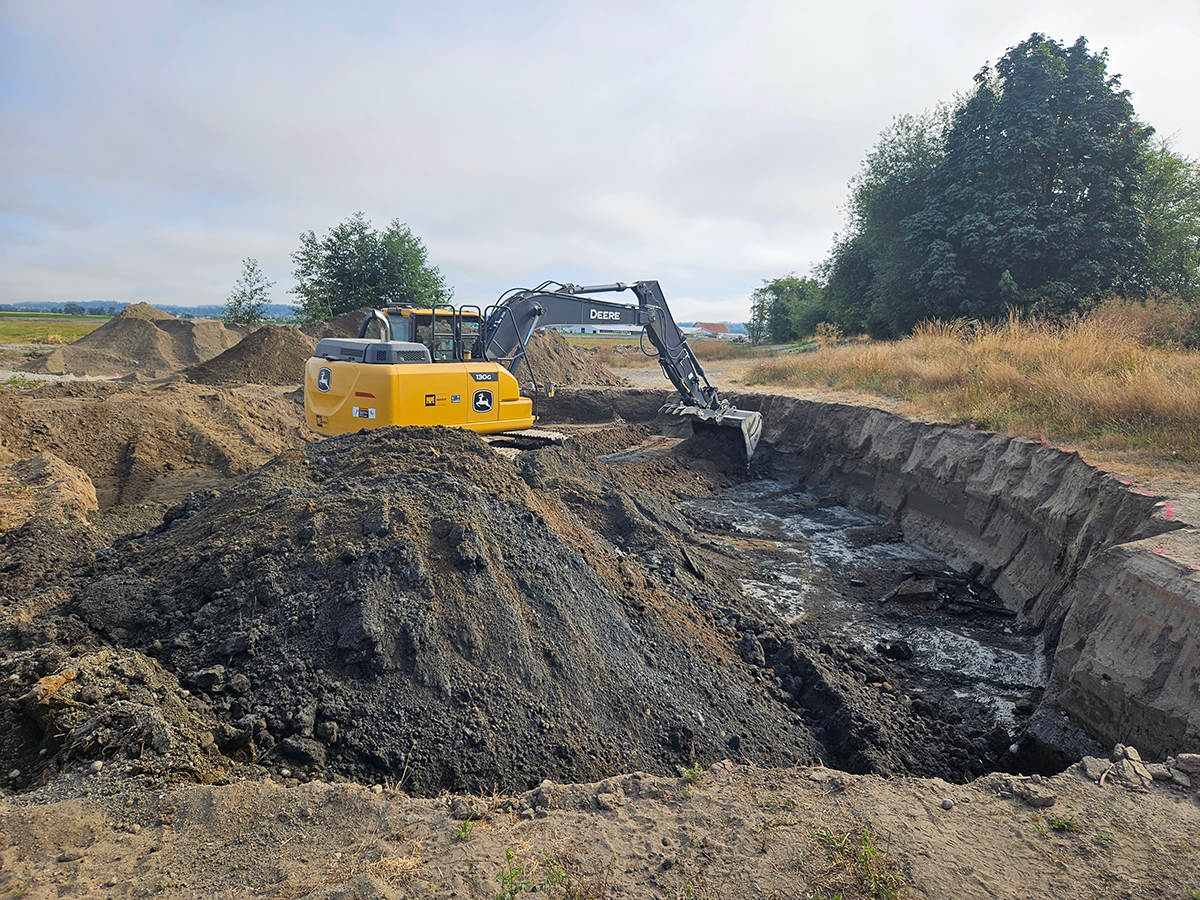Tribal Response Program
Updated 10/23/2025
The Stillaguamish Tribal Response Program (TRP) was established by a federal grant from the Environmental Protection Agency (EPA) to assess, cleanup, reuse, and prevent brownfields throughout Stillaguamish Tribal properties. These brownfields, as described by the EPA, are properties in which redevelopment or reuse is complicated by the real or perceived presence of hazardous materials. Possible brownfields can include, but are not limited to: illegal dumps, areas of historic industry, and underground and/or leaking underground storage tanks. Cleaning up brownfields is important for the protection of human health, environment, natural resources, and culturally significant areas within the Tribe’s Usual and Accustomed areas.

The TRP and associated state brownfields program are funded and supported through the Federal Brownfields Revitalization Act. This Act provides the tools and grants necessary for the public, private, and tribal sectors to promote sustainable brownfields cleanup and reuse. One main difference between the TRP and state brownfields program is that the TRP permits redeveloping brownfields for culturally beneficial uses, such as restoring shellfish beds or salmon habitat.
Coordinators:
Jody Brown, jbrown@stillaguamish.com
Rainer Luhrs, rluhrs@stillaguamish.com
The Four Elements
As required by the EPA, the response program must include or take reasonable steps to include the four elements, listed below. Achieving these elements is seen as a top priority and doing so will demonstrate the capacity of the program to properly address and cleanup brownfields.
- Timely survey and inventory of brownfields sites in state or tribal land. This will require the TRP to develop a system or process to document real or perceived brownfields and publish site information in a public record.
- Oversight and enforcement authorities or other mechanisms and resources. The TRP must provide oversight or enforcement authority to ensure human health and environment will be protected in accordance with applicable laws. This enforcement authority must also ensure failed responses are cleaned up, in addition to implementing long-term monitoring strategies and site maintenance.
- Mechanisms and resources to provide meaningful opportunities for public participation. This requires the Tribe to have an open, public record of all TRP documents. There also must be public hearings to discuss cleanup activities, including site prioritization, which will be announced with prior notice. Lastly, a pathway or mechanism (e.g. a form) must be available for community members who have been or are concerned about being exposed to hazardous substances from suspected brownfields. Once submitted, the designated TRP official must consider the request to perform a site assessment and appropriately respond.
- Mechanisms for approval of a cleanup plan and verification and certification that cleanup is complete. The TRP must have documented protocols to describe the process of approving cleanup plans and verifying response actions are complete.
Public Record
The Public Record for the Stillaguamish TRP is maintained by the TRP Coordinators and can be found in the Reference Library at the Stillaguamish Tribe Natural Resource Office, daily from 8 am to 4 pm. Information currently contained in the Public Record includes an inventory of brownfields, completed site assessments, and on-going cleanups. The Public Record is regularly updated as information becomes available.
For any additional information regarding the TRP, Public Record, or reporting suspected brownfields, please contact the TRP Coordinators, Jody Brown (jbrown@stillaguamish.com) or Rainer Luhrs (rluhrs@stillaguamish.com).
Reporting a Potential Brownfield
If you suspect a brownfield exists or request a site assessment be conducted, fill out this form and email it to the TRP Coordinators, Jody Brown (jbrown@stillaguamish.com) or Rainer Luhrs (rluhrs@stillaguamish.com). If site pictures are available, please attach them to the email. In the subject line please write ‘Reporting a Potential Brownfield’.
Important: Make sure to download the fillable PDF form before entering information.
Creosote Log Removal Program
As part of the Tribal Response Program, TRP Coordinators have established the Creosote Log Removal Program to locate and remove creosote logs along the beaches of Stillaguamish ancestral waters. Creosote is a toxic chemical mixture used as a wood preservative and has been used extensively in marine environment. Some of the components of creosote are known carcinogens. For more information regarding the Creosote Log Removal Program an informational pamphlet can be downloaded using the link below.
Creosote Log Removal Program Pamphlet
This project has been funded wholly or in part by the United States Environmental Protection Agency under assistance agreement BG-00J84103-5 to the Stillaguamish Tribe of Indians. The contents of this document do not necessarily reflect the views Page 20 of 29 and policies of the Environmental Protection Agency, nor does the EPA endorse trade names or recommend the use of commercial products mentioned in this document.
